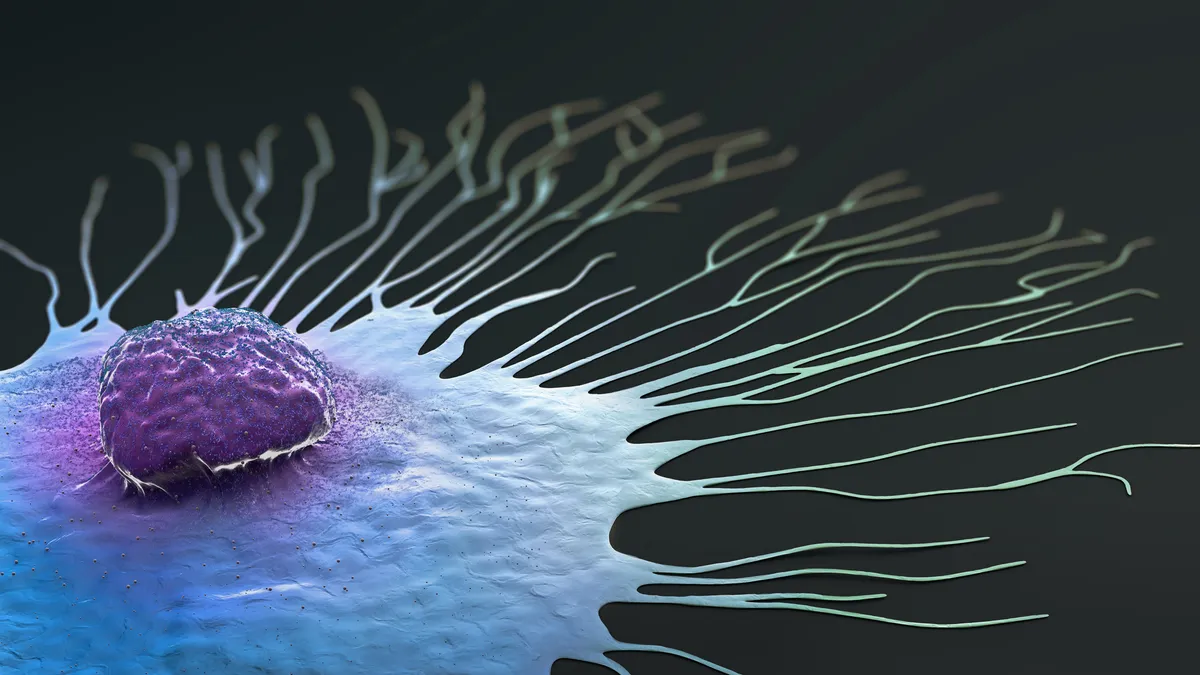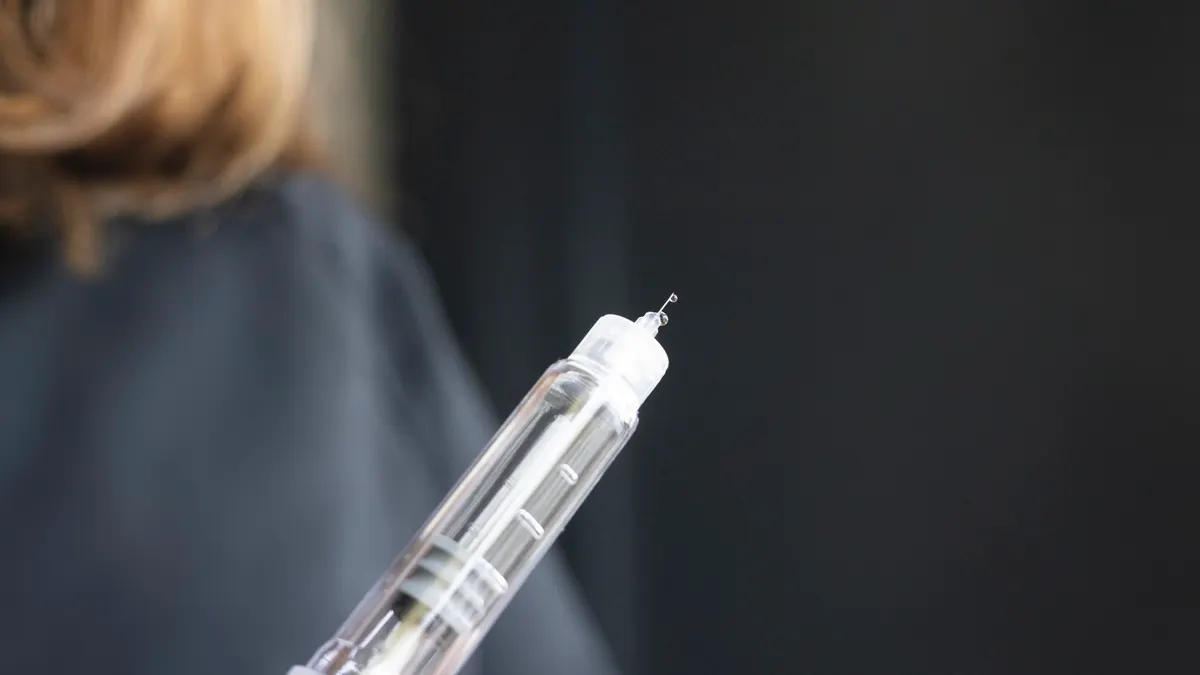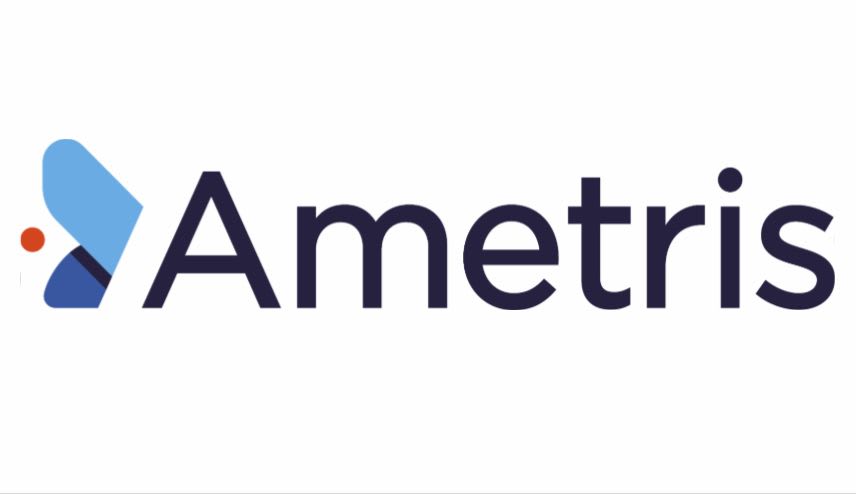More women with breast cancer are surviving the disease than ever before. Five years after diagnosis, on average some 90% of women with breast cancer are still alive thanks to earlier detection and treatment advances.

However, within those statistics are the numbers behind subtypes of the disease, such as triple negative breast cancer, that are harder to treat and often more aggressive.
Triple negative breast cancer comprises 10% to 15% of breast cancers. It's estrogen receptor-negative, progesterone receptor-negative and HER2-negative — making it more complicated and less responsive to treatments used in other types of cancer.
But the clinical picture for these patients is finally starting to change thanks to a spate of newly approved drugs and a number more that are moving through the pipeline, said Millie Gray, a healthcare analyst on the oncology team at Citeline, which provides R&D intelligence to the pharma industry.
Efficacy boosts from ADCs
One of the biggest advances has come in the form of antibody-drug conjugates (ADCs), a potent combination of synthetic immune-system proteins and chemotherapy drugs designed to target cancer cells while sparing healthy ones.
The current star in this category is AstraZeneca and Daiichi Sankyo’s Enhertu. The clinical results of the drug’s phase 3 Destiny-Breast04 trial, announced in June, vastly exceeded expectations and earned the drug FDA approval to treat metastatic human epidermal growth factor receptor 2 (HER2) low breast cancer, a newly defined cancer subtype.
“The phase 3 Destiny-Breast04 trial was huge news in the breast cancer community,” Gray said. “The reason these results were so important is because they were essentially in a new segment of breast cancer. HER2-low patients did exist, but there weren’t any targeted agents specifically approved (for) HER2-low breast cancer before. It also is now the first HER2-targeted agent to be approved for HER2-low breast cancers, and it's the first targeted therapy to be approved across all three subtypes of breast cancer. So, it’s a lot of firsts and that is why it was just such big groundbreaking news.”
Of the nearly 300,000 new breast cancer cases each year, “approximately 80% to 85% of new cases were defined as HER2-negative subtype, including hormone receptor positive and triple negative breast cancer,” according to the FDA. Now, some 60% of these HER2 negative breast cancers are considered HER2-low. Enhertu provides a promising new option for these patients.
“It didn’t just show moderate efficacy. The efficacy data was really, really positive,” Gray said. Results were called “practice changing,” by the ASCO Post.
But the good news on Enhertu wasn’t necessarily welcome for its competitor, Gilead’s Trodelvy, which was itself initially greeted with excitement as the first ADC approved for triple negative breast cancer patients whose only option at the time was aggressive chemotherapy.
“It provided an option for heavily pretreated metastatic patients — people who don't really have very many other options,” Gray said. It also extended overall survival by just over three months. But with the advent of the more-effective Enhertu, it’s likely to lose a lot of its luster.
“One really big trend that we're going to expect to see is a lot of therapies moving into earlier stages of therapy, like the adjuvant and neoadjuvant setting.”

Millie Gray
Healthcare analyst, oncology team, Citeline
Enhertu does have its drawbacks, however, including the potential for serious adverse side events. In the phase 2 trial, patients developed unusually high rates of a toxic lung condition called interstitial lung disease, Gray said. But an increased awareness among physicians and prescribers about interstitial lung disease helped to catch and treat the condition early in the drug’s phase 3 trial, which saw fewer of the adverse events, Gray said.
An emerging alternative to Keytruda
Another game-changing advance came with the approval of two immunotherapies, Tecentriq and Keytruda for the treatment of triple negative breast cancer.
Tecentriq was the first to receive accelerated FDA approval for this condition, but Roche made the decision to discontinue the drug after disappointing follow up studies failed to confirm the benefits seen in earlier trials.
Keytruda, which saw better clinical results, of course, remains on the market and has become one of the bestselling drugs of all time. However, Keytruda is not effective in patients with low levels of PD-L1, a protein found on cancer cells. For these patients another option may be on the horizon, according to Gray.
G1 Therapeutics recently completed enrolling triple negative breast cancer patients in a phase 3 trials for a Cyclin-dependent kinase 4 and 6 (CDK 4/6) inhibitor, Cocella (Trilaciclib), which interrupts the growth of cancer cells. While a number of CDK 4/6 inhibitors, such as Verzenio, Ibrance and Kisqali are used to treat some types of breast cancer, they haven’t been used in triple negative breast cancer, Gray said. Depending on trial results, it may one day offer an alternative for people who can’t take Keytruda.
“Obviously, there isn't any late-phase data, and it is hard to say without that, but it's been granted fast track status by the FDA, which is promising, and it has pretty positive early phase data,” Gray said.
New formulations with ‘huge’ potential
Another group of drugs working their way through the pipeline for difficult to treat breast cancers are the selective estrogen receptor degraders (SERDs) for hormone receptor positive and HER2-negative breast cancer.
“They have the potential to be huge,” Gray said.
These new oral drugs may provide an alternative to fulvestrant, which is given by injection, Gray said. This category includes Elacestrant, which Radius Health out licensed to the Menarini Group, Genetech’s Giredestrant, AstraZeneca’s Camizestrant, and Eli Lilly’s imlunestrant, among others, Gray said.
Because frequent injections can be painful, oral formulation of these drugs provide a major advantage.
“This is why as the reason they could be so big. It's likely the patients will hugely prefer the oral drugs if they are approved and if they can show a similar efficacy,” Gray said. “Once these (drugs) start to gain approval, competition will be really stiff. (But) the numerical data is really going to be key in differentiating them.”
Gaps still exist
While progress is being made there is still a lot more ground to cover.
“Especially in triple negative breast cancer a lot more needs to be done,” Gray said.
Over the next few years, it’s likely that there will be a push among drug companies to get some of these potent drugs, which are often used only in metastatic patients, to people with earlier-stage disease in hopes of improving outcomes, Gray said.
“One really big trend that we're going to expect to see is a lot of therapies moving into earlier stages of therapy, like the adjuvant and neoadjuvant setting,” she said. This is already starting to happen. For example, Keytruda is now approved for use before cancer treatment begins for triple negative breast cancer.
“Companies want to get drugs into earlier settings because there is a much larger population there for them to treat and potentially sell that drug to,” Gray said. But this will require companies to curb some of the more serious side effects.
“The big question is going to be how a company is going to be able to manage the side effects often seen in the metastatic setting,” Gray said.











